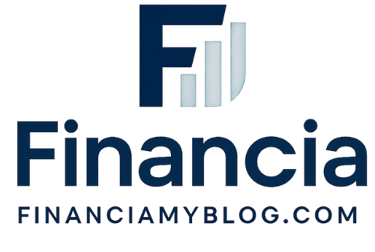
BLOG - FINANCIA
The Different Financial Markets
Financial markets are at the core of the global economy, providing investors with the means to trade a variety of financial instruments. They are essential for capital allocation and risk management. Investors can access several types of markets, including stocks, bonds, ETFs, derivatives, and cryptocurrencies, each with its own characteristics and risk factors.
FINANCIAL MARKETS
Mathéo Bockel
11/12/20254 min read


The stock market allows companies to raise capital by issuing shares and gives investors the opportunity to become partial owners of those companies. Stocks are traded on exchanges such as the NYSE, NASDAQ, or Euronext. Companies first issue shares through an Initial Public Offering (IPO) in the primary market. Once listed, shares are bought and sold on the secondary market. Stocks can be categorized into different types, including common stocks, which grant shareholders voting rights and dividends, and preferred stocks, which prioritize dividend payments but may limit voting rights. Growth stocks belong to companies expected to expand rapidly, such as Amazon, Google, or Tesla, while value stocks trade below their intrinsic worth and are often found in established businesses like Berkshire Hathaway. Dividend stocks provide steady income streams and are favored by investors seeking passive income, with companies like Johnson & Johnson or Procter & Gamble being popular examples. Stock market indices, like the S&P 500, Dow Jones, or FTSE 100, help gauge market performance and provide benchmarks for investment strategies.
The bond market enables governments, corporations, and institutions to borrow money from investors by issuing debt securities. Investors receive fixed interest payments in return. Government bonds, such as U.S. Treasury Bonds and German Bunds, are issued to fund public spending. Corporate bonds allow companies like Apple or Microsoft to raise capital for growth or operations. Municipal bonds finance local projects such as schools and infrastructure. Convertible bonds can be exchanged for company shares under specific conditions, offering investors flexibility. Junk bonds provide higher returns but carry increased risk due to lower credit ratings. Bond ratings, issued by agencies like Moody’s and S&P, help investors assess the risk of default. Some bonds, such as Treasury Inflation-Protected Securities (TIPS), adjust their value based on inflation to preserve purchasing power.
ETFs (Exchange-Traded Funds) allow investors to buy a diversified set of assets in a single trade. These funds are traded on stock exchanges like regular stocks and can track a variety of assets, including equities, bonds, commodities, and currencies. Index ETFs follow indices like the S&P 500 (SPY) or NASDAQ 100 (QQQ), offering broad market exposure. Sector ETFs focus on specific industries such as technology (XLK), finance (XLF), or energy (XLE). Bond ETFs provide exposure to fixed-income securities, such as AGG or BND. Leveraged ETFs amplify market moves, such as TQQQ, which provides triple exposure to the NASDAQ 100. Inverse ETFs move in the opposite direction of market indices and are useful for hedging risk, with funds like SH designed for the S&P 500. Thematic ETFs invest in emerging trends like clean energy (ICLN) or artificial intelligence (BOTZ). ESG ETFs focus on environmental, social, and governance criteria, with ESGU being a notable example for socially responsible investors.
Derivatives derive their value from an underlying asset, such as stocks, commodities, or currencies. They are mainly used for hedging or speculation. Options give the right to buy or sell an asset at a predetermined price. A call option allows the purchase of an asset at a fixed price, while a put option grants the right to sell an asset at a fixed price. For example, an investor expecting Apple’s stock price to rise might buy a call option. Futures contracts oblige the buyer to purchase or sell an asset at a specific future date. These are common in commodities, such as oil or gold futures, and stock indices, such as S&P 500 futures. CFDs (Contracts for Difference) let investors speculate on price movements without owning the underlying asset. Swaps involve exchanging cash flows or financial obligations, such as interest rate swaps used to manage interest rate risk.
Cryptocurrencies are digital assets based on blockchain technology. They are decentralized and traded globally. Bitcoin (BTC) is the first and largest cryptocurrency by market capitalization. Ethereum (ETH) powers smart contracts and decentralized applications, making it a fundamental part of the DeFi (Decentralized Finance) ecosystem. Stablecoins like USDT and USDC are pegged to fiat currencies to reduce volatility. Altcoins, such as Cardano (ADA), Solana (SOL), and Ripple (XRP), offer different functionalities and investment opportunities. NFTs (Non-Fungible Tokens) represent unique digital assets and have gained popularity in art and gaming industries. DeFi platforms like Uniswap and Aave enable financial transactions without intermediaries, offering decentralized lending, borrowing, and trading. Cryptocurrency exchanges such as Binance, Coinbase, and Kraken provide access to digital asset trading. Due to their volatility and regulatory scrutiny, cryptocurrencies require strong risk management strategies.
Beyond these major markets, several other investment opportunities exist. The Forex market is the largest market in the world, where currencies such as EUR/USD and GBP/JPY are traded 24/7. The commodities market includes assets like gold, oil, wheat, and coffee, which are influenced by global supply and demand dynamics. The real estate market involves physical property investment and REITs (Real Estate Investment Trusts), allowing investors to gain exposure to real estate without owning property directly. Private equity and venture capital provide funding to private companies before they go public, with firms like Sequoia Capital and Blackstone playing significant roles in financing high-growth startups.
Each financial market has unique characteristics and risk factors. Investors should diversify their portfolios and stay informed to optimize returns while managing risk. Understanding these markets is key to making informed financial decisions, whether for long-term investing, speculation, or hedging against potential risks. A well-balanced portfolio that integrates multiple asset classes can provide resilience against market fluctuations and contribute to long-term financial success.
GET IN TOUCH
Have a question, a partnership idea, or want to share your thoughts about finance?
At Financia, we value meaningful connections with our readers and collaborators.
Reach out and let’s start a conversation — your insights could inspire our next article.




